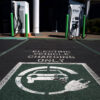The news of another auto bailout was met with a whimper last week. Surely, the little noticed request for an additional $22 billion was partly overlooked because $22 billion just doesn’t seem like a large amount of money after President Obama spent $787 billion of your borrowed dollars the week before. But the fact remains that many questions remain unanswered by Detroit, and unasked by Capitol Hill. For example:
How much money is the Federal Government committing to GM and Chrysler?
With the $39.4 billion in loans to GM and Chrysler, the auto suppliers asking for $25.5 billion, and the $25 billion in federal loans for automobile manufacturers to develop more efficient and cleaner vehicles, the total comes to $97.4 billion.
Are sales improving, giving Americans hope that the bailout will end soon?
For the month of January, GM’s sales plunged 49 percent, and Chrysler’s fell 55 percent. Non-Detroit companies did not perform much better. As sales continue to worsen, there is little doubt that the U.S. Government will be forced to either continue bailing these companies out, or admit this effort to be a failure. Having the government prop up a failing industry does not signal to consumers that these two companies are on the road to recovery.
Moreover, the companies’ plans for long-term viability do nothing to assuage that recognition. Senator Richard Shelby (R–AL) recently remarked, “The plans fail to demonstrate that either GM or Chrysler can reduce its labor costs to match its competitors. They also fail to show that the companies can reverse the decades-long slide in their market share.”
Are the United Auto Workers (UAW) making any concessions to help the Big Three become competitive with their foreign counterparts?
Ironically, the UAW reached a deal on labor concessions with Ford, the only U.S. automaker that is not taking federal money. In this deal, Ford can contribute equity, rather than cash to a union-run health care trust for retirees. Some may wonder why Ford was able to extract a union concession, albeit small, before Chrysler or GM. As Kristen Dziczek of the Center for Automotive Research points out, “The role of a federal partner at GM and Chrysler make it more difficult.” Ford Vice President Joe Hinrichs said, “The agreements, if finalized, will allow Ford to become competitive with foreign automakers’ U.S. manufacturing operations…”
UAW President Ron Gettelfinger said “The modifications [with Ford] will protect jobs for UAW members by ensuring the long-term viability of the company.” It is surprising that this principle of long-term viability protecting jobs is finally understood when a deal is reached but ignored when Senator Bob Corker (R-TN) tried to negotiate small wage concessions in 2009 as part of the original bailout, and Gettelfinger walked away offering nothing.
Won’t the Presidential Task Force help fix Chrysler and GM’s problems?
Well, this is assuming that the one thing stopping Chrysler and GM from being competitive in the past was a number of government bureaucrats with no automotive experience overseeing their manufacturing and sales. In fact, the 10-member Presidential Task Force on the Auto Industry is primarily environmental and labor activists, and does not include one person with one day of automotive manufacturing experience. Additionally, most of the members and policy aides have been highly critical of the auto industry. Some of the names include Gene Sperling, a counselor to Treasury Secretary Geithner who has publicly stated that the union does not need to make any wage or benefit cuts; Ron Bloom, a special assistant to the President of the United Steelworkers; Lisa Heinzerling, senior climate policy council to EPA administrator Lisa Jackson; and Heather Zichal, a former Obama campaign aide, and deputy director of the White House Office of Energy and Climate Change.
And today, it was reported that out of the eight members of the task force, and the ten senior policy aides who will assist them in their work, there are only two American cars among them. Only two. So not only do they not know how the U.S. auto industry operates, they don’t even support it.
Clearly, this Task Force was designed to make U.S. car companies more eco-conscience. Isn’t that a good thing?
If you are going to give $100 billion to two failing companies, it would make sense that reasonable oversight is conducted. However, that does not include micro-managing a free market from the ivory halls of the nation’s capital. Consumers demanding cleaner automobiles will do that without mandate, and with more success. Which is exactly what has happened. Recently, both USA Today and Car and Driver tested the new Ford Fusion Hybrid against the Toyota Prius and other competitors and found it to be the “best gasoline-electric hybrid yet.” It delivers over 34 mpg, better than all competitors and as Car and Driver states, “Ford has pulled off a game changer…” This game changer wasn’t developed because government got in the game.
This car was developed long before this Administration took office, using affordable, existent technology to meet customer demand. The car does not need special fueling stations nor is it out of price with what consumers can afford. Both of these conditions may be ignored with new government mandates, which are sure to tax the overwhelming majority of Americans driving gasoline cars into submission. Taxpayers that make up over 95% of drivers currently on the road. It will be interesting to see if future ‘stimulus’ items continue to pick winners and losers among cars, and continue to penalize Americans for choosing a car that suits their family’s economic and utilitarian needs.
So what is the best option right now?
The bankruptcy process is often the best way for troubled enterprises to get back on their feet. Debts are reduced or cancelled and contracts terminated or renegotiated, allowing firms to get a fresh start. And if a firm still cannot be made viable, bankruptcy also provides for an orderly and predictable process for getting assets – including plants and equipment – back into productive use by others. There are, of course, losers under bankruptcy. Management is more likely to be replaced, but that might be deserved. Shareholders lose their investment, but stock values are worth little already.
The most sweeping argument against bankruptcy is that millions of people employed by the automakers and by firms dependent on them will lose their jobs. The reality is just the opposite. The government should not prop up large, failing firms where consumers do not wish to purchase their products. The result would be sales lots full of GM and Chrysler cars and a loss of innovation and efficiency. Imagine if the government propped up the VCR industry while DVDs were available on the market.
Yes, jobs will be lost under bankruptcy, but these companies must become smaller to survive under any scenario, even with massive bailouts. In their bailout plans, for example, GM and Chrysler proposed to cut 50,000 jobs globally. If the companies were forced to address their problems and make the hard choices now, rather than postponing them through taxpayer bailouts, it will lead to more jobs and a better economy over the long term. Senator Carl Levin (D-MI) said, “Bankruptcy is a non-starter”. It would seem that with a $100 billion of your tax dollars invested in these two companies, all options should at least be on the table.
So, bottom line?
According to the Economist, “…it is unlikely that even these measures would be enough to stave off mass bankruptcies were the task-force to allow GM to go into Chapter 11, which in turn would jeopardise the ability of the carmakers so far not seeking bail-outs—Ford and the foreign transplants—to keep their factories open. President Obama has said that the final decisions about the future of America’s automotive industry will rest with him. It is doubtful whether any of the choices his task-force presents him with will be either cheap or palatable.”




























